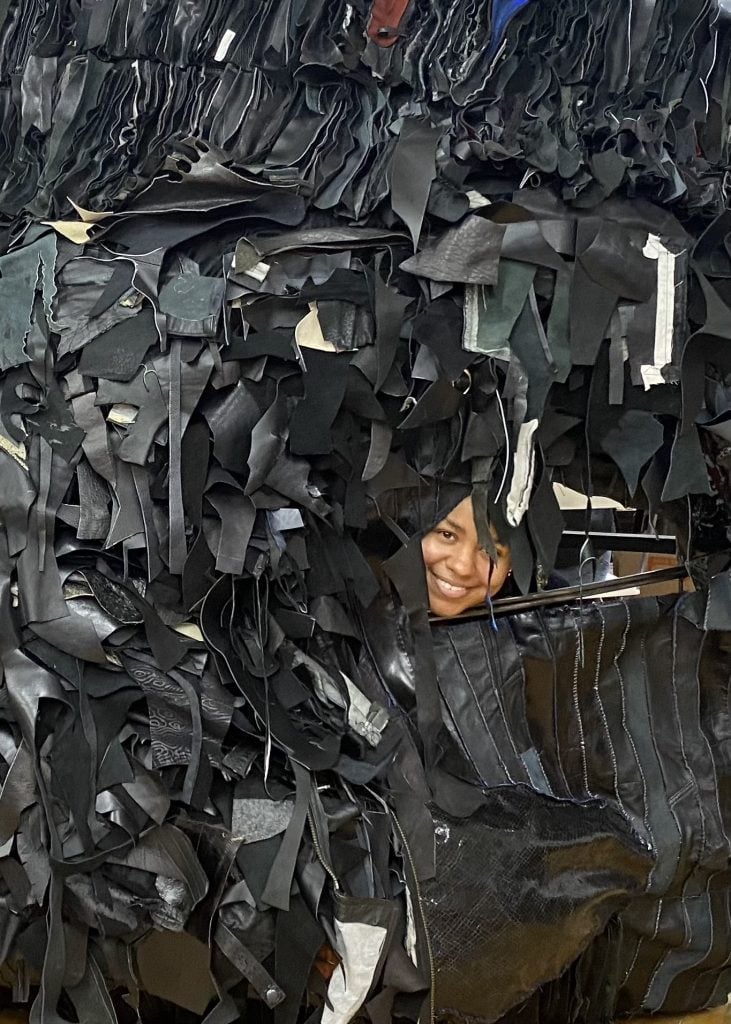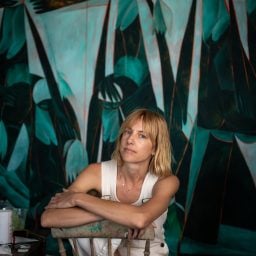Brooklyn artist Tau Lewis’s studio is filled with keepsakes and personal mementos, countless scraps of fabrics the artist collects to compose her artworks, and, of course, Little gal, a highly personal sculpture the artist made in her own likeness.
Born in Toronto in 1993 to a family of Jamaican ancestry, Lewis is self-taught, and the materials she works with are by and large found or recycled, with Lewis spending hours searching through thrift stores to source materials.
For Lewis, who shows with Los Angeles’s Night Gallery and London’s Stephen Friedman, this is an important step in her process: her works draw meaning from the histories latent in her materials. In many ways, the process links her works to the history of the African diaspora, and a heritage that made art out of whatever was at hand.
A talismanic quality often suffuses Lewis’s work, with her sculptures seeming to will into being new realities. These other otherworldly works have been garnering increased attention from institutions and collectors alike.
As Lewis prepared to showcase work at Cecilia Alemani’s Venice Biennale, “The Milk of Dreams,” this spring, she welcomed us into her studio, where she shared some of the mementos and artworks that give invigorate her creative process.
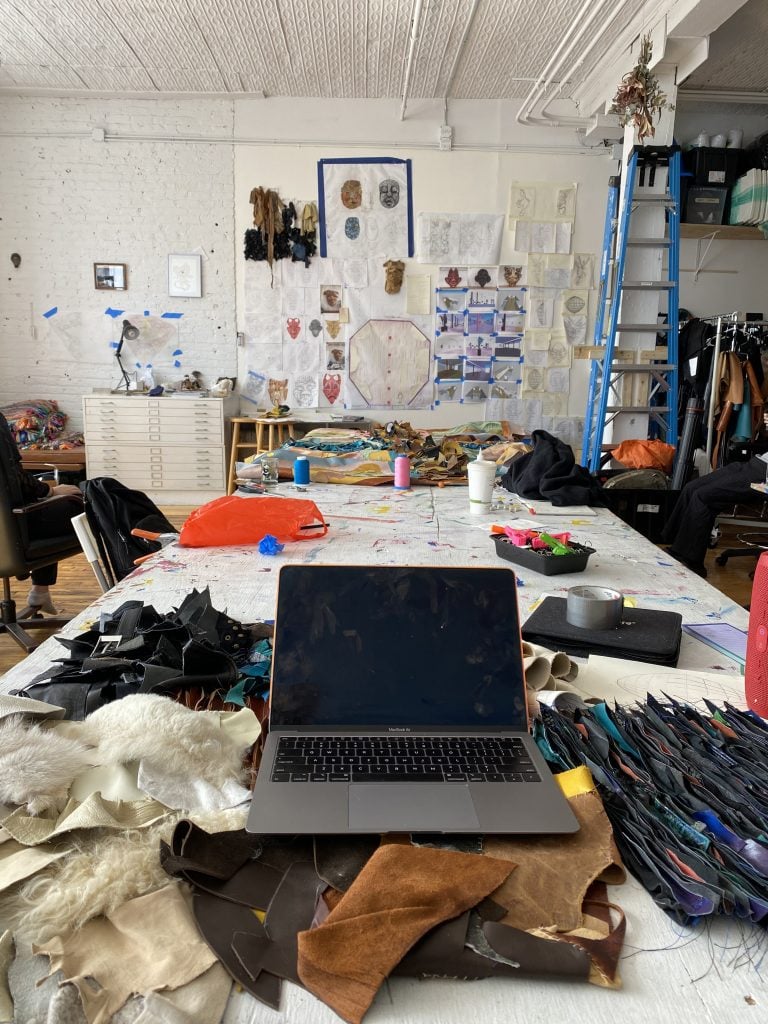
Tau Lewis’s Ideation Wall. Courtesy of the artist.
Can you send us a snap of the most indispensable item(s) in your studio and tell us why you can’t live without it?
My collection of treasures. which are usually placed throughout the studio, because they’ve helped me get through hard times by giving me stories and creative power. They’re mainly found objects, personal items, some are from friends.
[One is] a school photo of my brother, Sam. I’ve always had it hung in my studio over the years.
Little gal is my most valuable possession. She’s the first work of art I consciously made in my image. She has many admirers and many gifts. She is well known for helping people find things if she is asked very kindly. It’s really incredible. She’s the most gentle soul. Little gal normally traverses the studio and home, but during a rigorous stretch of work, she must be present in the studio. She’s overseen the creation of so many artworks, it’s very important that she’s present. After this, she’ll also go home and take a well-deserved break.
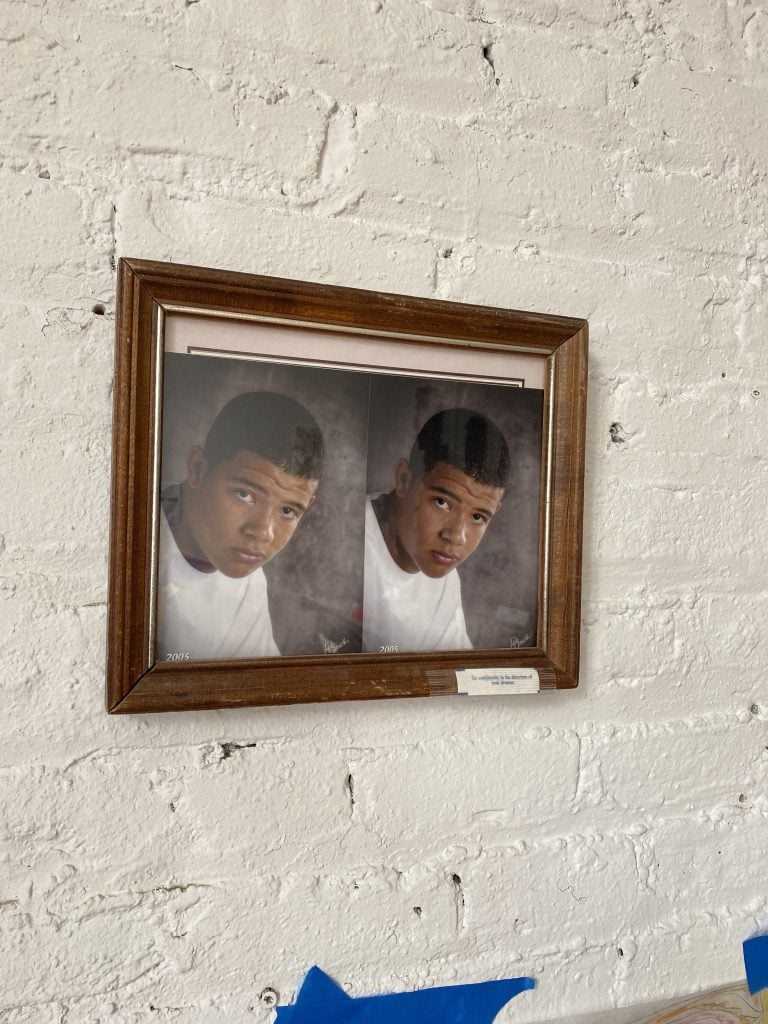
Sam’s high school photo with a fortune that says, “Go confidently in the direction of your dreams.” Courtesy of Tau Lewis.
When it comes to planning for your presentation in Venice, what is the studio task on your agenda this week that you are most looking forward to?
Not being present in the studio. It’s the most important relationship in my life and part of maintaining that relationship is taking breaks here and there. This one is very, very well earned, I think.
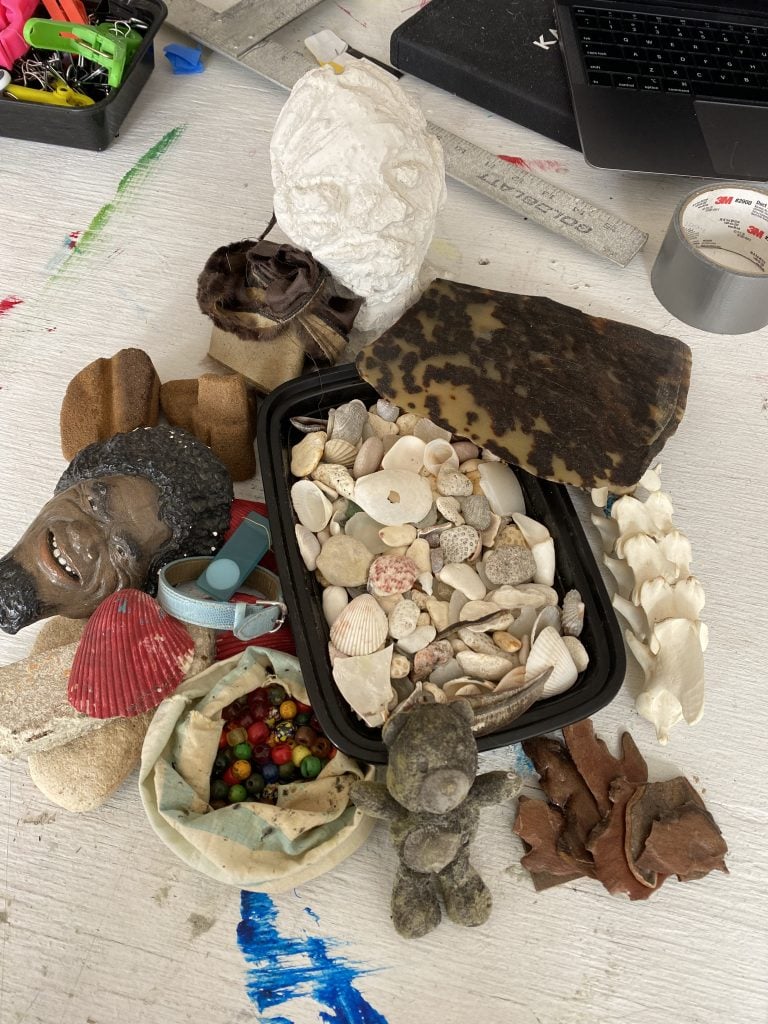
“A satchel of grannie’s hair beads, tortoiseshell, shells and dog spine from Negril, pieces of a Lonnie Holley sandstone sculpture, little bear from the Bronx, plaster carvings, jewelry, tree bark from Spain,” Lewis says are included in her collection of treasures. Courtesy of the artist.
What has been the biggest challenge so far, as you prepare for the Venice Biennale?
Regulating and caring for my body. This was one of the most physically and emotionally demanding presentations I’ve ever created. I’m on a journey towards deep restorative bodywork after having completed it. When I’m swallowed up in my work I am totally emptied out, in a sense. I work solely as an operative, or a vessel through which information flows and construction is carried out if that makes sense. I’m a conduit. It’s a magical thing, but it’s easy to get lost in and lose track of your body.
When you feel stuck while preparing for a show, what do you do to get unstuck?
I keep working. Just keep my hands busy, or write something. Depends on what “stuck” is. Could be demotivation? In this case, sometimes deep rest and strict separation are necessary for a little while.
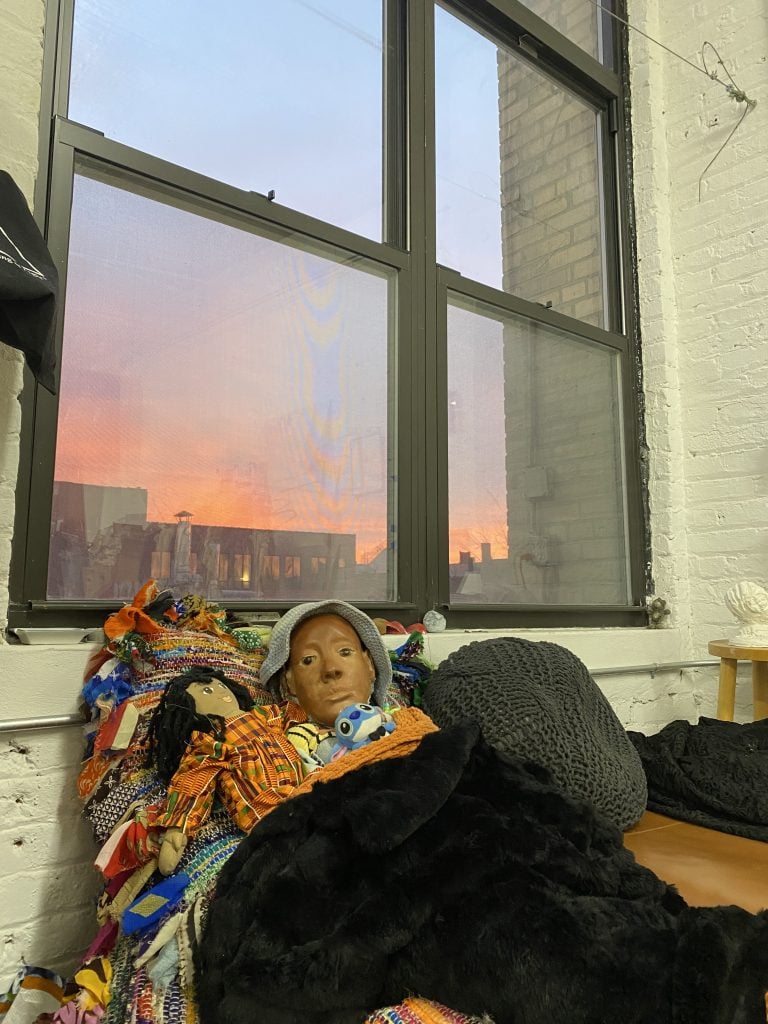
Tau Lewis’s Little Gal. Courtesy of the artist.
What trait do you most admire in a work of art? What trait do you most despise?
I admire sincerity and honesty, artworks that I would even describe as characteristically pungent. These tend to have a hand-crafted, bold authenticity to them. I dislike pretentiousness and inaccessibility in an artwork. I would define those in my own terms.
What are you looking at while you work? Share your view from behind the canvas or computer—wherever you spend the most time.
Lately, I’m staring at different swatches of funky fabrics—these are handmade in my studio from scrap fabrics and leather—or at my ideation wall. That’s where I plot out exhibition designs and installations, technical drawings, and test fabrics.
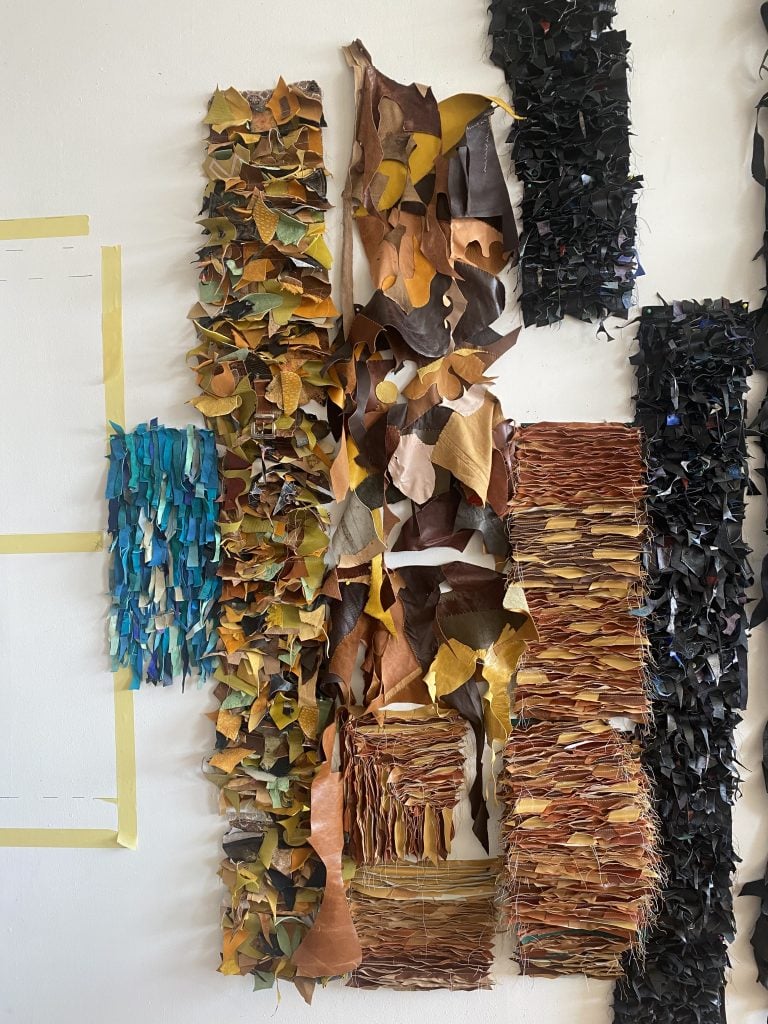
Courtesy of the artist.
What is one film, piece of writing, or other artwork that inspired you most in preparing for Venice?
This fur mask that I produced in 2016. It was a part of another sculpture that I broke down and redistributed into several other artworks. I held on to the mask. Then it was kept at someone’s house for a couple of years and I got it back recently. It was my starting point for the works in Venice and had metaphorically been in my back pocket for five years leading up to this project. It was mailed to me serendipitously just as I began making my Venice presentation.
What’s your favorite hideaway to eat, drink, or to take a break in Venice?
The opening of the 2022 Venice Biennale will be my first time stepping foot in Italy. Once I get to Venice, I’ll get back to you on this!
